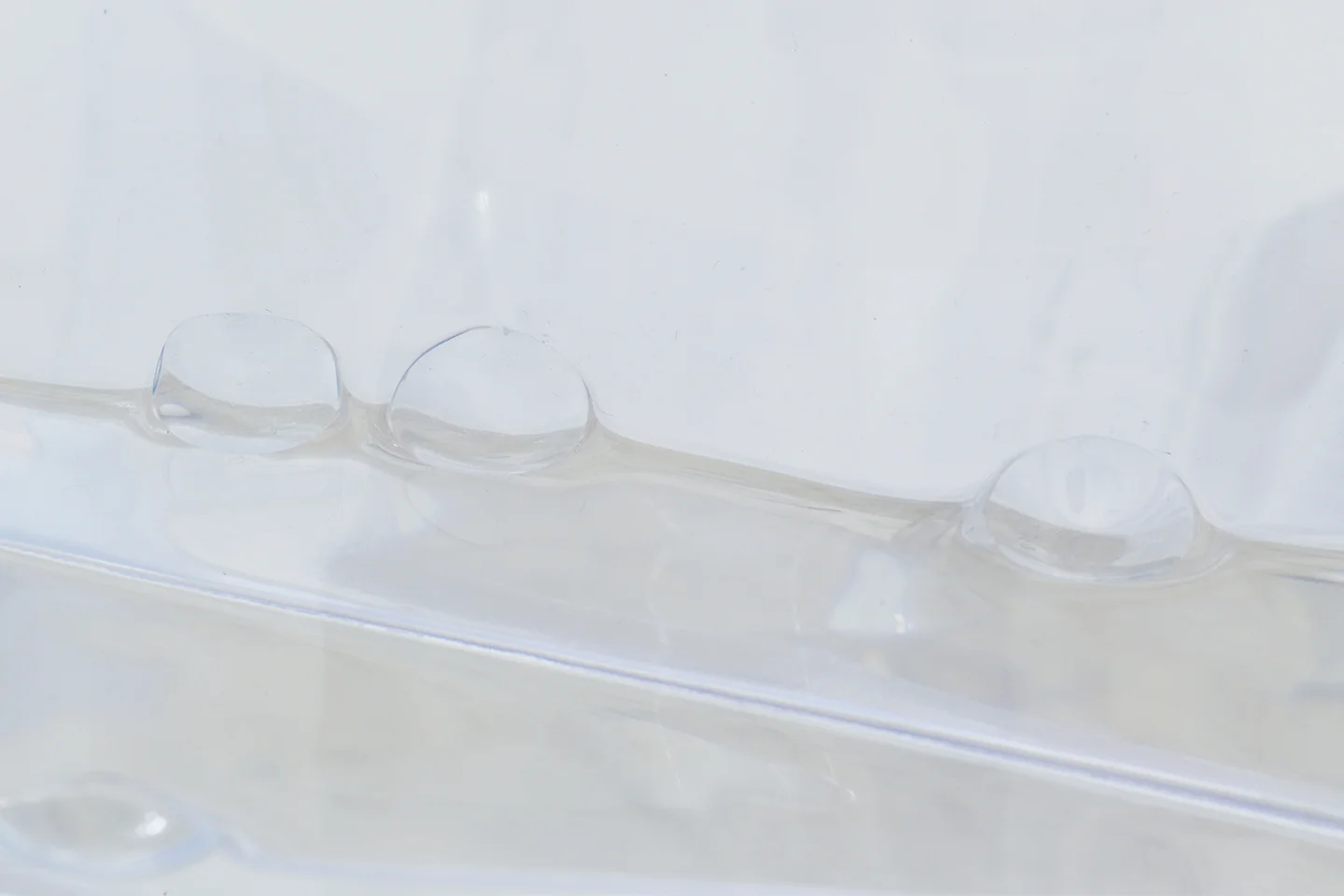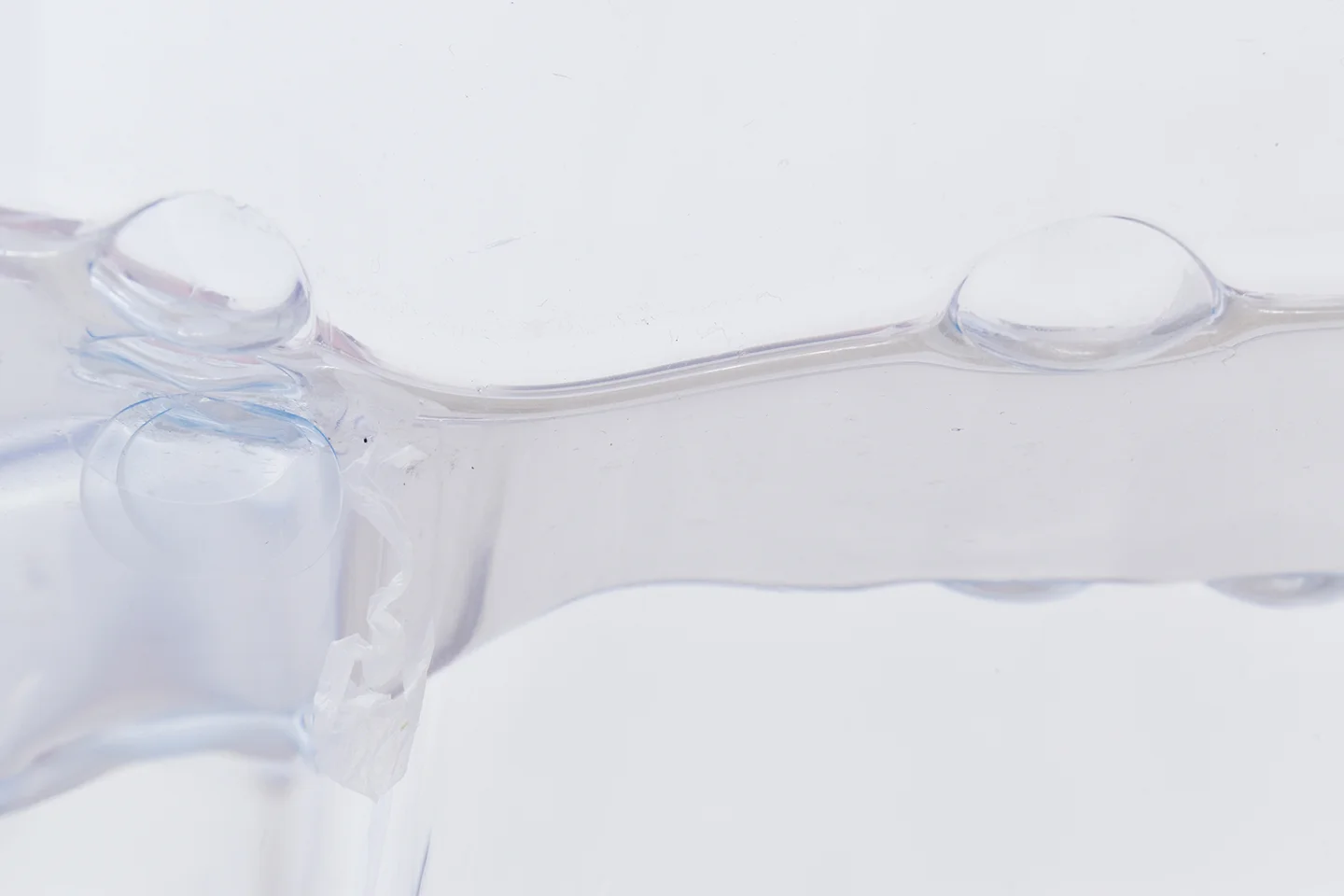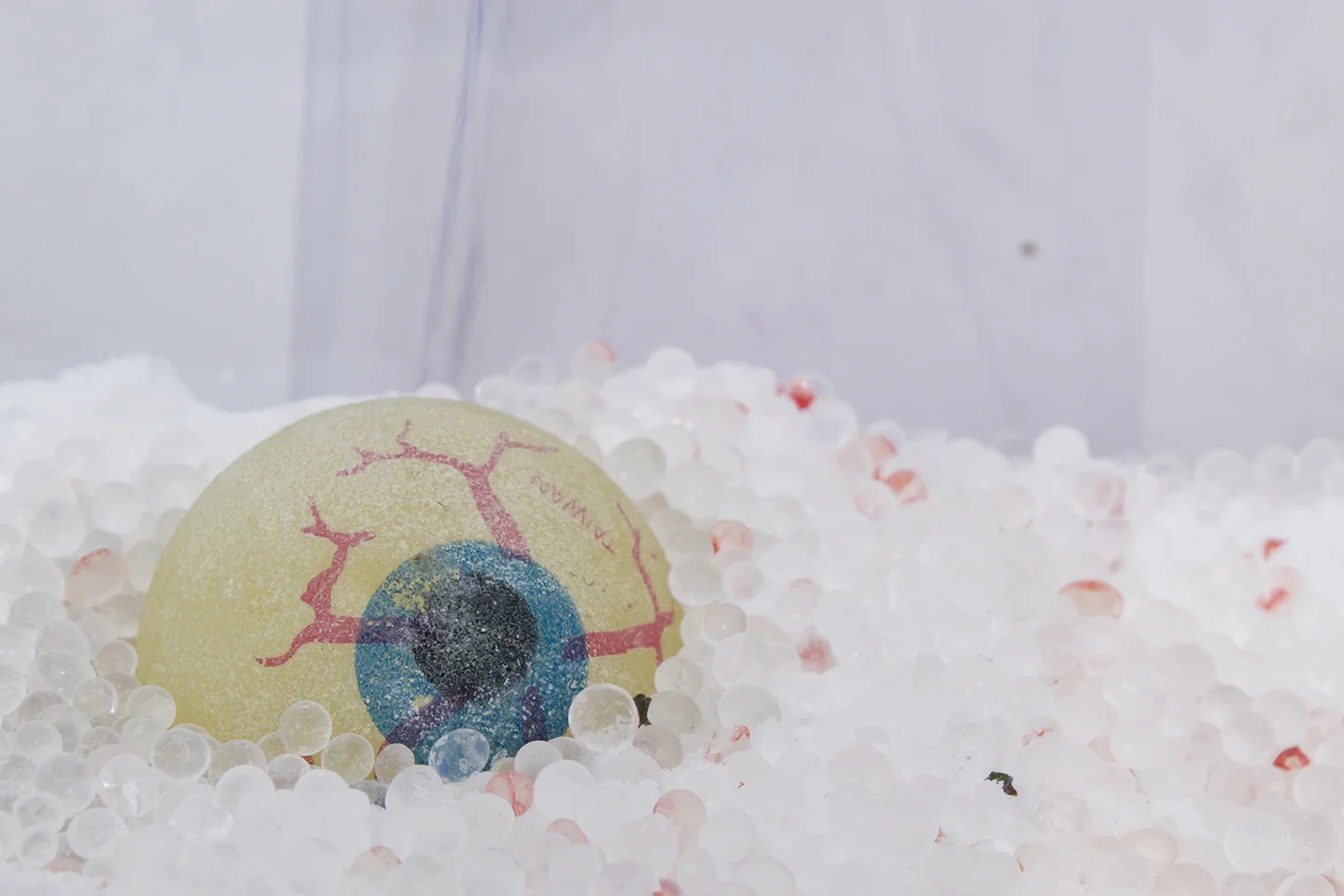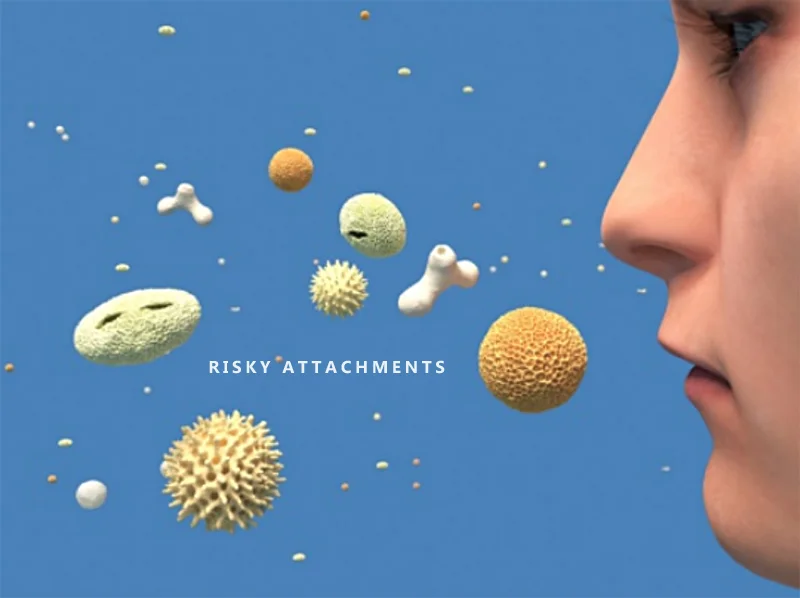Week 99_Risky Attachments
Like A Little Disaster is proud to present “Risky Attachments”, a new collective project
involving the works of Andreas Ervik, Lara Joy Evans, Lauren Gault, Thomas Hämén,
Jocelyn McGregor, Plasticity, Rustan Söderling, Ittah Yoda.
L.A.L.D. is also very happy to present “Risky_Attachements / The_Guidebook”, analog/
digital publication that including interventions and contributions by all artists involved in
the show and Penny Rafferty, Sebastian Rozemberg, Ferdinando Boero, Christina Gigliotti
and L.A.L.D.
---> RISKY_ATTACHMENTS/THE GUIDEBOOK
From December 17 to February 18 - by appointment only.
info@likealittledisaster.com
+393389577276 / 33835282796
FOOTHOLD
Via Cavour, 68
Polignano a Mare, Bari - Italy
likealittledisaster.com
GMO / Chikungunya / PFOS / Wannacry / BSE prions / Radioactive waste / Human cryogenics / Hydroponic agriculture / Molecular gastronomy / Frozen embryos / Open systems / Global warming / Climate change / Ozone hole / Transglobal migration / Deforestation / Acid rain / Sensorized devices/ Databases / Natural reserves / Genetic synthesizers / Internet / Sophia / Glass Beach / Renaissance Technologies / Xylella fastidiosa / Surgical Robots / Neural lace / Oculus rift / Particulates / Space debris / Psychotropics / Stem-cells...
How to classify these strange objects?
Are they produced by nature or by society? Are they moral or scientific problems? Are they technological or political matters?
Do these strange objects belong to nature or culture? Where can these hybrids be placed?
Are they human?
Are they human because they are the product of our work? Are they natural?
Are they natural because they are not the result of our activity? Are they local or global?
RISKY ATTACHMENTS
Reality no longer presents itself as the face of an indifferent nature, and we no longer have to deal with simple and natural objects, well-defined and self-contained, "bald" objects without risk. Today, we deal more and more with "hairy", "dishevelled" objects, with "risky attachments", quasi-objects, made of multiple connections never fully closed. They are able to trigger unexpected consequences, even in the long-term, and because of that even more unpredictable and uncontrollable. Objects such as these do not simply stand in opposition to the subject but among which man is involved and with whom they share the same destiny.
The objects that surround us are hybrids that rebel against any form of classification, knots of a network that binds multiple and distant factors in an uninterrupted chain, and that risk blowing up all sorts, all programs, all effects. We are witnessing the proliferation of these chimaeras that can no longer be relegated solely to the natural world. Their interaction ends up being a question of subjectification/objectification/subjection, human being classifications and the hierarchy of actors and values.








It was Kant who consolidated the unjustified division between human and non-human, placing man at the heart of philosophy while at the same time reducing the rest of the world to a set of unknowable objects. Things in themselves become inaccessible, while, symmetrically, the transcendental subject is far from infinite. No matter what variations will be made in the history of philosophy on this theme, the gap between man and world will always be privileged compared to that between tree and moon or fire and wheat.







Pure forms a priori?
I – PURIFICATION.
Contemporary thought continues to dissect the world into two opposing kingdoms. On one side there are humans and their culture and nature and non-humans on the other. Phylogeny on one side and ontogeny on the other. Genetic heritage on one side and technological alterations on the other.
But no, there are not two mutually isolated zones called "nature" and "culture": there are only "actants", and it is not possible to split the natural realm from the cultural one - not because they are irremediably intertwined, but rather because the dichotomy between nature and culture is unfounded. There is nothing but a plethora of actants, none of which are intrinsically natural or cultural.
"There are no pure idioms, we are all mediators, translators."





II - MIXTURE.
These hybrids are a nightmare for any attempt to divide the world into two purified districts. For this reason, the modernist position deliberately misrepresents them as a mash-up of pure forms. But such mixing is impossible if the two pure forms do not exist at all. In fact, our world contains nothing but hybrids, even though the word "hybrid" is misleading with its false shades of a mixture of two pure ingredients. If we call them quasi- objects, the work done by "quasi" removes any trace of an initial or ideal purity.
There are only actants: built through many tests of strength with others, and all partially resist any attempt to disassemble them.






-ACTORS-ACTANTS-HYPHENS-AGENTS-
Following the tracks of quasi-objects, it now looks like an object, now like a tale, now like a social bond, never reducing itself to a simple single body. All that matters are the hyphens and the networks that link them.
Objects are subjects, social actors that move, act, perform in the same way as other human social actors; they interact with each other and between themselves and us. A Quasi-object is first nothing but a sign, a token, a trace that remains, left by the displacement of a body that first arrives, produces, acts and then retreats. It is a holistic touch that remains and persists as a trace of the presence of a body's action.
Compared to the social system, objects do not symbolize, do not reflect, do not reify relationships between subjects, but they contribute to shaping them. Objects considered agents, work as mediators responsible not for conveying messages, but for building, rewriting, and modifying meanings.
The traditional mediator was only a means to an end, while the agent is both a means and an end.
What we find anywhere and everywhere are simply networks of actors. The actor is not entirely an object and not entirely a subject. Rather it can behave as both, depending on how we see it.
The quasi-object is a relational property that does not possess any substantiality. It is not a distinct reality as opposed to subject, but a relational function allowing it to build real or virtual connections between subjects by immersing them in a collective-social construction.
When the quasi-object creates a community, this community becomes real. We, men, spend time transforming the virtual into real life.
- What is a coin?
- It is a quasi-object. It can turn into anything. It is a general equivalent. So today there is nothing more real than money, which started out as a quasi-object.






Quasi-Object-Quasi-Subject
Quasi-object is neither an object nor a subject, it is a relationship.
Quasi-objects are phenomena that can only be represented as an interaction between the observing subject and the observed object - or the other way round. They are a half object and half subject since they can't be defined by any of these two polarities. They cross and build social groups, mediating and transforming personal-collective identities and relationships within networks, thus allowing us to pass from the obtuseness of "I" to the fluidity of "Us".
- But is there really an "I" and "us"?
We dance together with the elements, we are made of billions and trillions of small components each endowed with their own intelligence. There is, of course, no such thing as "I" or "Us". What exists are only risky attachments, temporary and fragile balances between different things. And that "Us" has a multiplicity in itself and constantly works with all the other animated-inanimate makers in the world.








The personal pronoun is a sponge, it is a ball!
“It is not an object, but it is one nevertheless, since it is not a subject since it is in the world; it is also a quasi-subject, since it marks or designates a subject who, without it, would not be a subject. He who is not discovered with the furet in his hand is anonymous, part of a monotonous chain where he remains undistinguished. He is not an individual; he is not recognized, discovered, cut; he is of the chain and in the chain. He runs, like the furet, in the collective. The thread in his hands is our simple relation, the absence of the furet; its path makes our indivision. Who are we? Those who pass the furet; those who don't have it. This quasi-object, when being passed, makes the col, lective, if it stops, it makes the individual. Ifhe is discovered, he is "it" [mort]. Who is the subject, who is an "I," or who am I? The moving furet weaves the "we," the collective;ifit stops, it marks the "I".
(- The furet is the animal. The ferret, as well as the marker in a game somewhat like hunt-the-slipper or button, button, who's got the button?)










The ego is not a fixed point, an invariable structure, but a being of circulation. The only invariable pronoun is "Us"; it designates the multicentric network, it belongs to everyone and is in common with everyone else.
“This quasi-object that is a marker of the subject is an astonishing constructer of intersubjectivity. We know, through it, how and when we are subjects and when and how we are no longer subjects. "We": what does that mean? We are precisely the fluctuating moving back and forth of "I." The "I" in the game is a token exchanged. And this passing, this network of passes, these vicariances of subjects weave the collection. I am I now, a subject, that is to say, exposed to being thrown down, exposed to falling, to being placed beneath the compact mass of the others; then you take the relay, you are substituted for "I" and become it; later on, it is he who gives it to you, his work done, his danger finished, his part of the collective constructed. The "we" is made by the bursts and occultations of the "I." The "we" is made by passing the "I." By exchanging the "I." And by substitution and vicariance of the "I." “









- M.E.S.H. -
Political power acts on us, and the rhetoric of the text acts on us, but so do concrete walls, icebergs, tobacco fields and poisonous snakes.
- What ends?
- Nature ends.
The mesh is the combination of all life-forms, but also the whole of all life-forms that have died and have fertilized and modified the Earth, its structure and its history. Everything is life, even what does not seem to be: iron is a byproduct of bacterial metabolism and so is oxygen. Mountains can be made of shells and fossilized bacteria and the decisive thing is that the mesh does not have any more important or essential element than the others.











